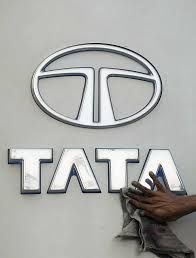 | « Back to article | Print this article |
 Traditional commercial vehicle manufacturers, such as Tata Motors and Ashok Leyland, are increasingly switching to providing vehicles fully built by them, rather than supplying only the chassis.
Traditional commercial vehicle manufacturers, such as Tata Motors and Ashok Leyland, are increasingly switching to providing vehicles fully built by them, rather than supplying only the chassis.
The advantage is customers of trucks and buses can buy the final product directly from vehicle manufacturers, instead of approaching a body builder with a chassis, as has been the case in the past.
Mumbai-based Tata Motors, India’s biggest commercial vehicle manufacturer, has invited vendors (body builders) to set up a facility closer to its chassis manufacturing plant.
Ashok Leyland, the third-largest commercial vehicle maker in the country, is offering fabricated designs on its products to meet consumer requirements.
These include specified containers to refrigerators.
Customers of a fully-built vehicle bought directly from the manufacturer benefit from the desired performance expected from the vehicle, compared to an uncertified body mounted on a chassis, which does not come with much guarantee.
Ravindra Pisharody, executive director (commercial vehicles) at Tata Motors, said: “Customers go to specialised tin-shed body makers, which in many cases are not (built) as per regulations. Quality is never guaranteed; so, as a result, the performance was not up to what was promised.”
Today, 60-70 per cent of Tata Motors vehicles are fully-built products.
A few years ago, the figure was 20-25 per cent.
“We believed we should take the lead and provide solutions in fully-built vehicles, so we created a vertical for this. “We have two-three vendors for something which has large application, which is not specialised.
“Something like a petroleum tanker, where the numbers are less; so, we have a specialised vendor. Based on our projection, they (vendors) invest in capacities.
“The final quality check is done and suited to Tata Motors specifications,” added Pisharody.
The difference between the cost of buying a fully-built vehicle from a manufacturer and that from a body builder could be as high as 20